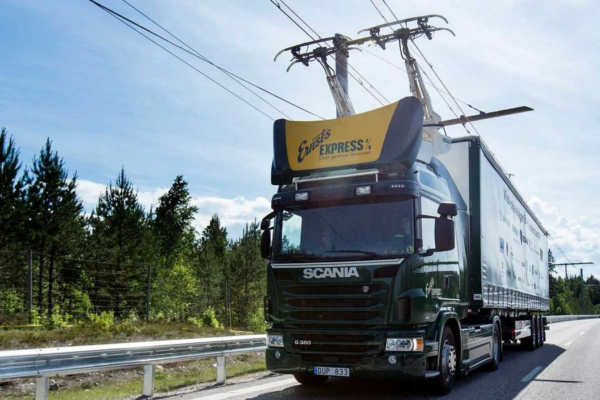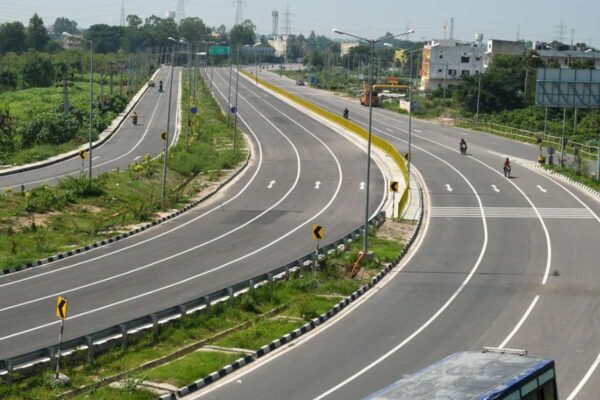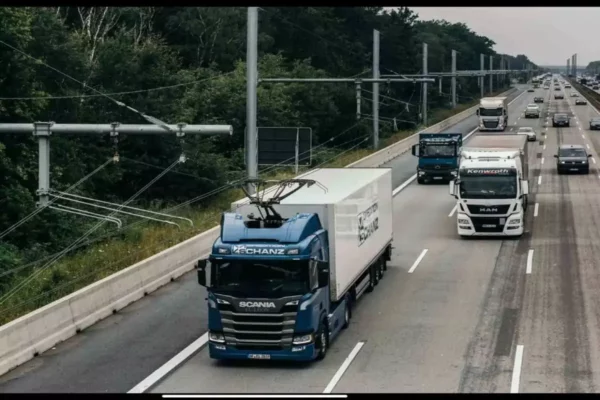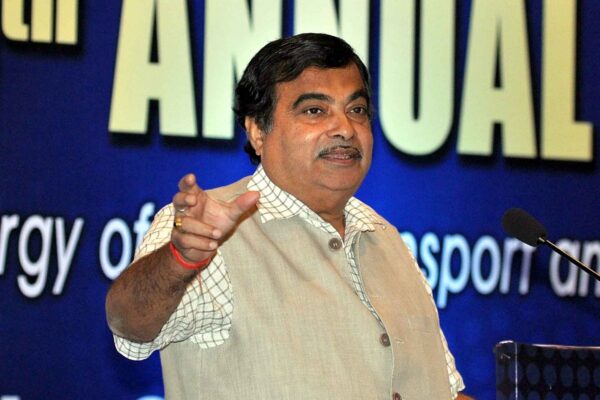Electric Highways: After Electric Cars, Buses And Scooters Now Electric Highways Being Developed Powered By Solar Energy. All You Need To Know!

Electric Highways: After Electric Cars, Buses And Scooters Now Electric Highways Being Developed Powered By Solar Energy. All You Need To Know!
Electric Highway: Electric vehicles are being used in the country to cause less damage to the environment, and a lot of emphasis is being given to them. After electric buses, cars and, bikes, scooters, now the emphasis is being laid on building electric highways in the country.
A proposal has been issued to build an electric highway in the country. Union Minister of Road Transport and Highways Nitin Gadkari has given information about this proposal and said that soon electric highways are being prepared for heavy vehicles like trucks and buses in the country.
These trucks and buses will be like electric vehicles, which will be charged and operated by electric wires installed overhead on the highway.
According to Nitin Gadkari, Union Minister for Road Transport and Highways, the government is constructing solar-powered electric highways to make charging large buses and trucks easier.
Mr Gadkari reiterated the government‘s goal to develop an electric public transportation system in India while speaking at an event organized by the Indo-American Chamber of Commerce (IACC).
What is Electric Highway?
An electric highway is an electrically-augmented road.
In general, it refers to a road that provides electricity to moving cars, either via the use of overhead power lines or through the use of power lines inserted into grooves already present in the road. According to Nitin Gadkari, the road ministry is also promoting toll booths to use solar power.

An electric highway is:
“A network of electrical connections and electromagnetic transmitters installed beneath the surface of the road generate electromagnetic fields. This energy is captured by a coil within the automobile, creating voltage that can be used to recharge the battery and perhaps increase the vehicle‘s range.
What are its advantages?
According to the website, electric highways might transform efficient automobiles into much more than just commuting vehicles. Any vehicle equipped with the appropriate equipment may be able to transfer electricity, and since all of the wires are buried beneath the road, there is no chance of an accident or electric shock.
According to Gadkari, who spoke to Mint in March 2021, there will be a dedicated electric highway lane on the Delhi-Mumbai Expressway.
On the 1,300-kilometer-long Delhi-Mumbai Expressway, Gadkari stated during a parliamentary debate that the government is working to construct a separate “e-highway” where trucks and buses may go at a 120 kph pace.
A pilot project would be implemented on the NH 48, specifically the 200-kilometre Delhi-Jaipur stretch of the Delhi-Mumbai Expressway, with 20% of the roads being electrified and a separate lane serving the recharging needs of trucks and other electric vehicles, according to a June 2021 report in The Print.
According to a National Highways Authority of India (NHAI) source quoted by The Print, the Center has been preparing a project similar to this one for some time, but it is still in the planning stages.
It has always been Gadkari’s desire to construct an electric highway between Delhi and Jaipur, according to a PTI report from last year. The project is still being considered. With a foreign corporation, we are in conversation.
26 new expressways are being developed.

Additionally, Nitin Gadkari stated that his administration is building 26 new expressways. Gadkari added that the implementation of the PM Gati Shakti Master Plan would speed up project approval and lower logistical costs.
Emphasis on charging stations powered by solar and wind energy
The administration, according to Nitin Gadkari, aims to electrify the nation’s public transportation infrastructure. He added that the government is supporting and giving solar and wind energy-based charging facilities for electric vehicles a lot of attention.
We are working to develop electric highways that will allow buses and large trucks to be charged while they are travelling, the speaker stated.
Electric vehicle charging infrastructure based on solar and wind energy is receiving strong support from the government.
A pathway that supplies power to passing vehicles, such as through overhead power wires, is referred to as an electric highway. Gadkari claims that the government is supporting solar-powered toll booths.
The Minister claimed that the Road Ministry had created a newer alignment and had carried out route optimization studies along essential routes.
Mr Gadkari emphasized that a well-developed infrastructure boosts economic activity, fosters the growth of new firms, and encourages the creation of jobs, saying, “We are building 26 greenfield expressways.” He said that the implementation of the PM Gati Shakti Master Plan would speed up project clearance and lower logistical expenses.
The Minister encouraged U.S. private businesses to invest in India’s logistics, ropeways, and cable car industries, saying that both India and the U.S. are ideal partners.
He stated that the government is implementing tree plantation procedures when building and expanding highways and that approximately three crore trees would be planted alongside the National Highways.
And as of the right moment, 27,000 trees in National Highways projects have been successfully transplanted, he added. In order to cut down trees and plant new ones, the government is developing a new policy known as “Tree Bank,” according to Mr Gadkari.
According to the policy, organizations like the National Highways Authority of India and the National Highways and Infrastructure Development Corporation Limited would be required to keep track of the trees they plant as part of their projects.
“Automated vehicle toll collection based on usage”
According to Union Minister Nitin Gadkari, the Union government is also doing a trial for an automatic number plate recognition system with the goal of minimizing traffic jams at toll booths and charging drivers for the precise distance their vehicles go on tolled highways.
The automatic license plate recognition system is being tested by the Division of Road Transport and Highways to foster electronic tax collection without hitting traffic.
He stated, “With this type of revolutionary system, we truly wish to fulfil two main things – free circulation of traffic at toll booths and make payment.” without providing any additional information. In 2018–19, the average fare booth processing period for automobiles was approximately 8 minutes.
Since FASTags were implemented in 2020–2021 and 2021–2022, the average waiting time for cars has dropped to 47 seconds.
Even though there has been a significant reduction in waiting times, there are still some toll plaza delays during peak hours in some places, particularly in towns and cities with dense populations.
To ensure smooth and safe traffic operation, Mr Gadkari said Advanced Traffic Management System (ATMs) is being deployed on all newly constructed National Highways and existing 4-plus-lane National Highways to enable seamless and safe traffic operation.

The Road Transport and Highways Minister said, “The Ministry plans to implement the Intelligence Traffic System (ITS) on 15,000KM of the National Highway by 2024 to increase road safety.”
The government is currently considering two solutions, according to Mr Gadkari, who stated last month that they include number plates and a satellite-based toll system where the GPS is installed in the vehicle, and the toll is directly deducted from the passenger’s bank account.
When GPS Tracker, which uses satellite technology, replaces FASTag, we wish to charge a fee for the use of the property. Technology is also present on license plates, and India has good technology, the man stated.
“We’ll decide on the technology. Although we haven’t made a formal decision, in my opinion, the number plate technology will eliminate toll plazas in favour of an advanced computerized digital system that will allow us to provide relief. No lines will form, and people would feel a tremendous deal of comfort,” the Minister had promised.
Examples in other countries
According to The Print, Sweden opened the first electrified road in the world in 2018 that recharges the batteries of automobiles and trucks using it.
German motorways added their first electrified roadway in 2019 to allow hybrid trucks to refuel while travelling. It was six miles long, constructed by Siemens, and located not far from Frankfurt.
Munich-based Siemens Mobility offers hybrid trucks that operate similarly to trams by drawing electricity from an overhead cable via a pantograph. 670-volt direct-current overhead cables are used in the technique.
In Los Angeles, a prototype for an emission-free roadway that uses overhead cables, similar to a tram or city train, is being built.
According to the source, the 7.5 million electrified routes were introduced in the South Korean town of Gumi in 2013.
In order to lessen smog in California, Siemens system pilot projects are anticipated at the ports of Los Angeles and Long Beach.
According to PC Mag, Siemens began testing trolley-style vehicles in Germany in 2012. At speeds up to 60 mph, hybrid diesel-electric vehicles are equipped with rods that elevate when they encounter highways with overhead power lines.
The trucks can only be powered by electricity once the overhead wire is connected. As they rejoin the main route, they revert to their hybrid engines. According to the website, this means that if a driver turned left or right while still connected to the cables, they would not disengage.
According to Volkswagen.com, research initiatives are being funded by Germany, Italy, and Sweden with the eventual goal of creating an electrification infrastructure that might span some of Europe’s highway systems.
According to the website’s report, Scania sees electric highways as one of a number of potential technologies that can help make long-haul transportation sustainable in the future. Claes Erixon, Scania’s executive vice president of research and development, made this statement.
Make it a requirement for car owners to use alternative fuels.
The government would invest over Rs 2.5 lakh crore in the electric highway, according to the minister of roads and highways, which should significantly accelerate India’s adoption of electric vehicles.

The minister added that his ministry had decided to build four-lane roads connecting every district in India.
He also asked users to switch to alternative fuels, including ethanol, methanol, and green hydrogen, in order to help combat the pollution issue. I urge users of large vehicles to switch to alternative energy sources like green hydrogen, methanol, and ethanol because they are less expensive and more environmentally friendly.
In order to alleviate the issues that big and heavy vehicle owners are facing due to corrupt practices in local State Transport Offices, the Minister also pledged that construction will immediately begin on automating all support rendered by RTOs.
The minister acknowledged that the corruption in the Regional Transport Offices is causing problems for owners of large vehicles (RTOs).
In light of this, he said, “Automatization is essential for all RTO-provided operations.
The minister stated that reducing traffic fatalities and accidents is his goal. We need qualified drivers, he stated, noting the need to be attentive regarding road safety.
India needs various types of transportation since its economy is expanding quickly, the minister continued.
Gadkari added that India’s logistics costs are higher than those in China, the US, the EU, and the EU.
Edited by Prakriti Arora




